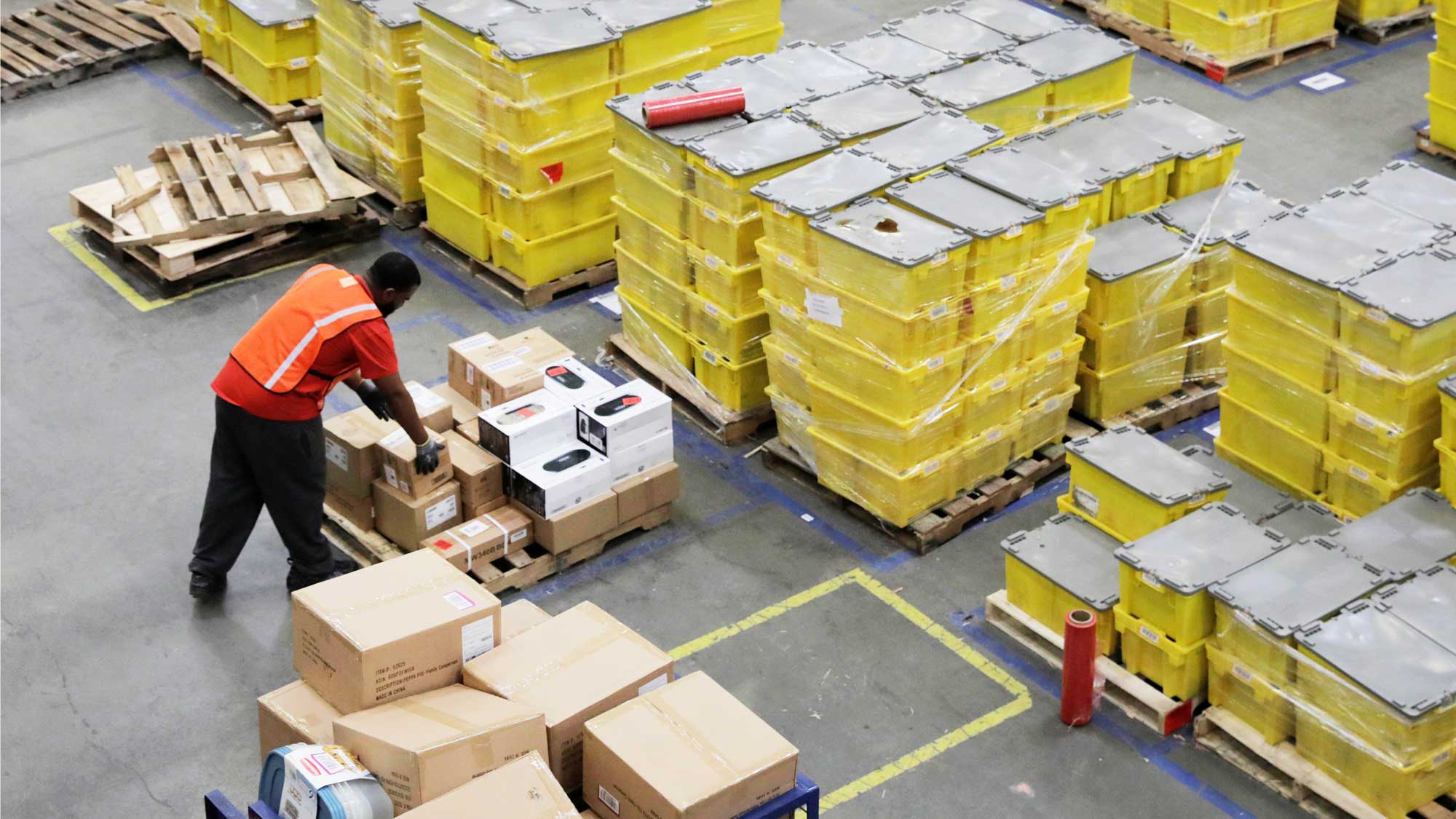The next big industrial warehouse might find itself on top of a former golf course. Or in an empty office building. Maybe in a vacated shopping mall.
The Covid pandemic has accelerated e-commerce sales globally, with digital sales driving a larger portion of retailers’ and grocers’ businesses. That has sparked a race for warehouse space and caused companies to seek creative commercial real estate alternatives as they strive to fulfill online orders and avoid delivery delays.
Demand for industrial, big-box facilities — warehouses or distribution centers of 200,000 square feet or more — hit a record in North America last year, according to commercial real estate services firm CBRE. It was the strongest performer among all industrial real estate. Transactions for those spaces totaled 349.3 million square feet in 2020 across the top 22 markets, a nearly 25% jump from 2019, according to CBRE.
The pace of e-commerce growth will likely slow in 2021, as people feel safe shopping at stores again. But real estate executives say industrial space will remain a competitive market.
“We’re really just seeing the tip of the iceberg as far as demand and growth of e-commerce,” said Mindy Lissner, a CBRE executive vice president. “Once you start it, you figure out how easy it is to order things online.”
“The pandemic has had a huge impact on the growth of demand of warehousing and fulfillment,” Lissner added. “But it was already growing anyway. … And the trend is going to continue.”
Time to get creative
With a hot market and supply of industrial space running thin, businesses and their brokers in a land grab are having to get creative.
How about an old golf course? Amazon recently found a shuttered 18 holes in the town of Clay, New York, to build a $350 million distribution center. It’s also plotting a fulfillment center on top of a portion of a former golf course in Alcoa, Tennessee.
The e-commerce giant also has taken old and defunct malls, of which there are plenty in the U.S., and turned them into warehouse spaces. Like the old golf courses, old malls are often situated in communities full of paying customers, which makes the land suitable for distribution facilities looking to be near people’s homes. But developers still face hurdles like rezoning.
Vacant office buildings are becoming an attractive target to flip into warehouse space, Lissner said. She said many have convenient locations and sprawling campuses, just off a highway. More office space could end up on the market, especially if businesses extend remote work policies after the pandemic and need less space for employees’ cubicles.
Experts also point to a pivot away from sprawling warehouse facilities in the middle of nowhere toward spaces closer to customers. In some cities, such as New York, that has inspired companies to build up rather than out. Some have moved into multistory buildings that have been converted into vertical warehouses in outer boroughs and neighborhoods like Long Island City.
“Our customers are preferring more expensive real estate,” said Chris Caton, managing director of global strategy and analytics at Prologis. “They’re no longer going out into really remote locations, like Columbus or Indianapolis or Memphis. Instead, a lot of that demand, and in particular the rent growth in our business over the last decade, has been focused in major 24-hour cities.”
Prologis, a real estate investment trust that owns warehouses and is Amazon’s biggest landlord, estimates that for every $1 billion in sales, e-commerce companies require 1.2 million square feet of distribution space.
Aggressive leasing
The need for industrial space has been especially high among discount retailers like Burlington, TJ Maxx and Ross Stores; home goods and home improvement stores like Wayfair and Home Depot; and meal-kit companies and grocers, Lissner said during a CBRE virtual event.
But the demand is seemingly everywhere you look.
Gap announced in February a $140 million investment to construct a distribution center in Longview, Texas, as part of its effort to double its online business over the next two years. Upon completion, Gap said the 850,000-square-foot facility will be able to process 1 million packages per day. Initially, it will be used for Old Navy’s burgeoning e-commerce business, then expand to other parts of Gap’s business.
Williams-Sonoma recently told analysts it plans to increase its manufacturing and distribution capacity by 20% to 30% over the next year, including adding about 2 million square feet to the company’s distribution-center network.
Home Depot earlier this year opened a 1.5 million-square-foot distribution center to fulfill online and store orders in Dallas.
For those grocery and food businesses, space can be even harder to find. They need special cold-storage facilities where they can keep perishable items, which are pricier and more limited than a typical warehouse that holds apparel or electronics. Real estate executives from CBRE and JLL say demand has grown for those as more Americans cook at home and order their weekly groceries online.
Shares are up about 15% over the past 12 months for Americold, the only publicly traded temperature-controlled warehouse owner in the U.S., in part because of storage requirements for Covid vaccines.
Unlike retail real estate, where rents have been pressured because demand isn’t what it used to be, prices for industrial real estate are still climbing.
Craig Meyer, president of JLL’s Americas industrial division, said “aggressive leasing” among retailers has caused vacancy rates to drop and rents to rise.
“We’re actually concerned about the availability of product beginning in the middle of the year,” he said.
Industrial rents, as a national average, hit $6.47 per square foot in February, up 5.1% year over year, according to data from the real estate tech firm CommercialEdge. New leases signed for the month commanded a 14.7% premium, averaging $7.42 per square foot, the group said.
“On the industrial side, prices are higher than I’ve ever seen in my 30 years,” Lissner said. “I mean, much, much higher than any prediction.”
